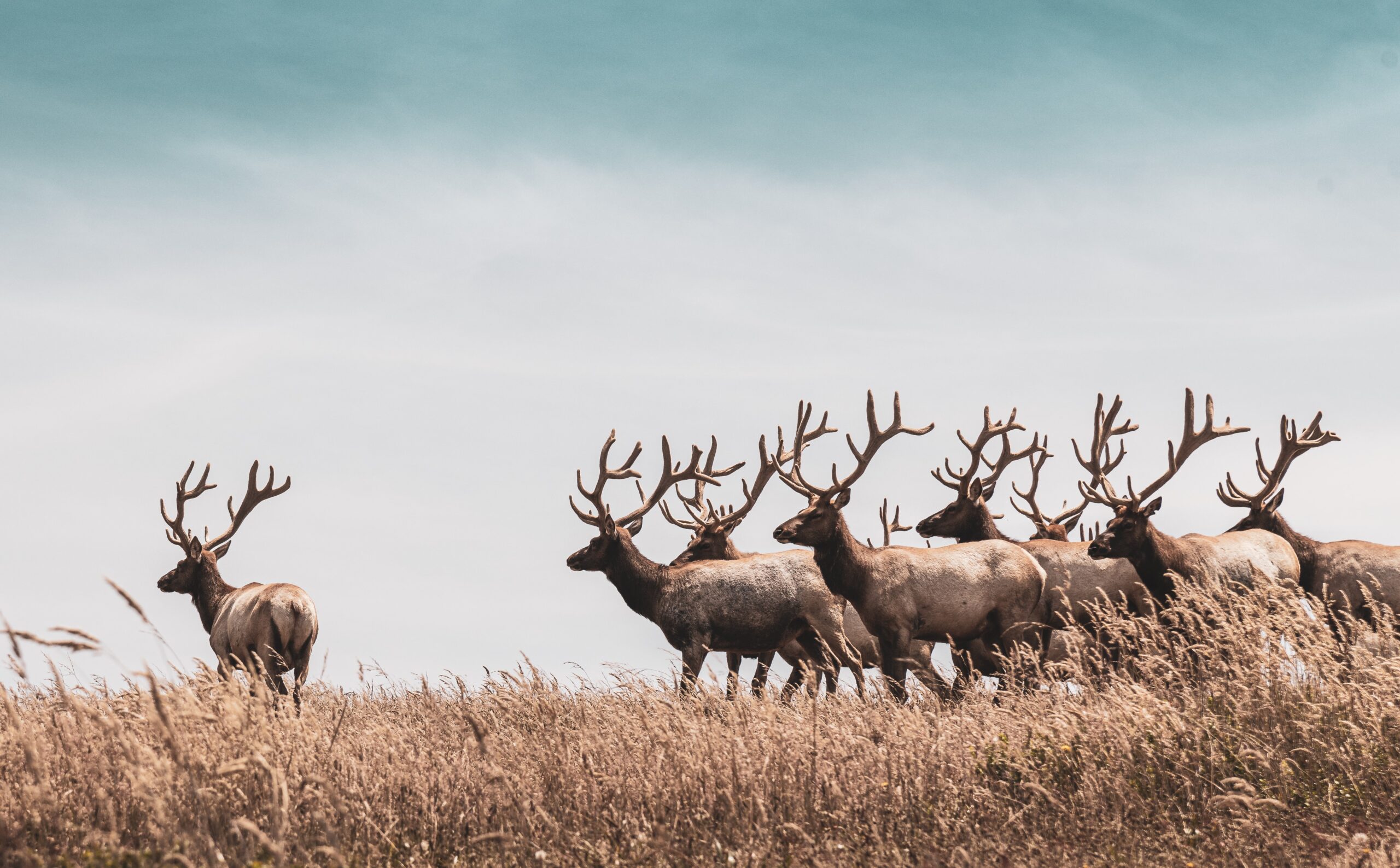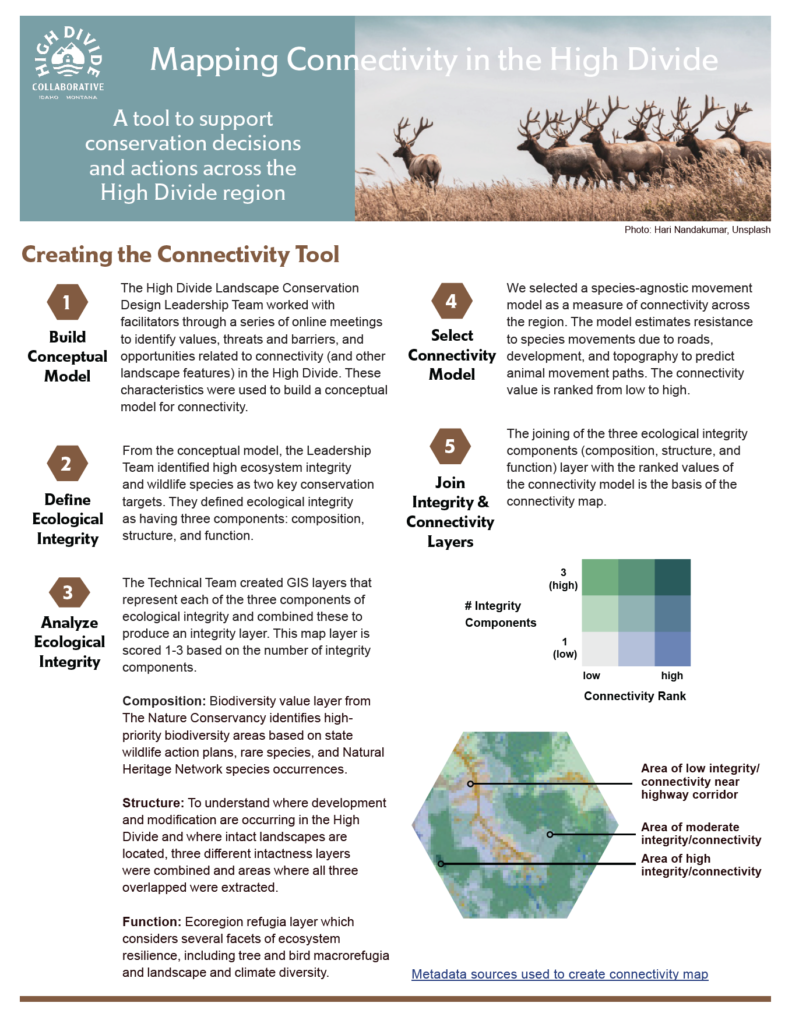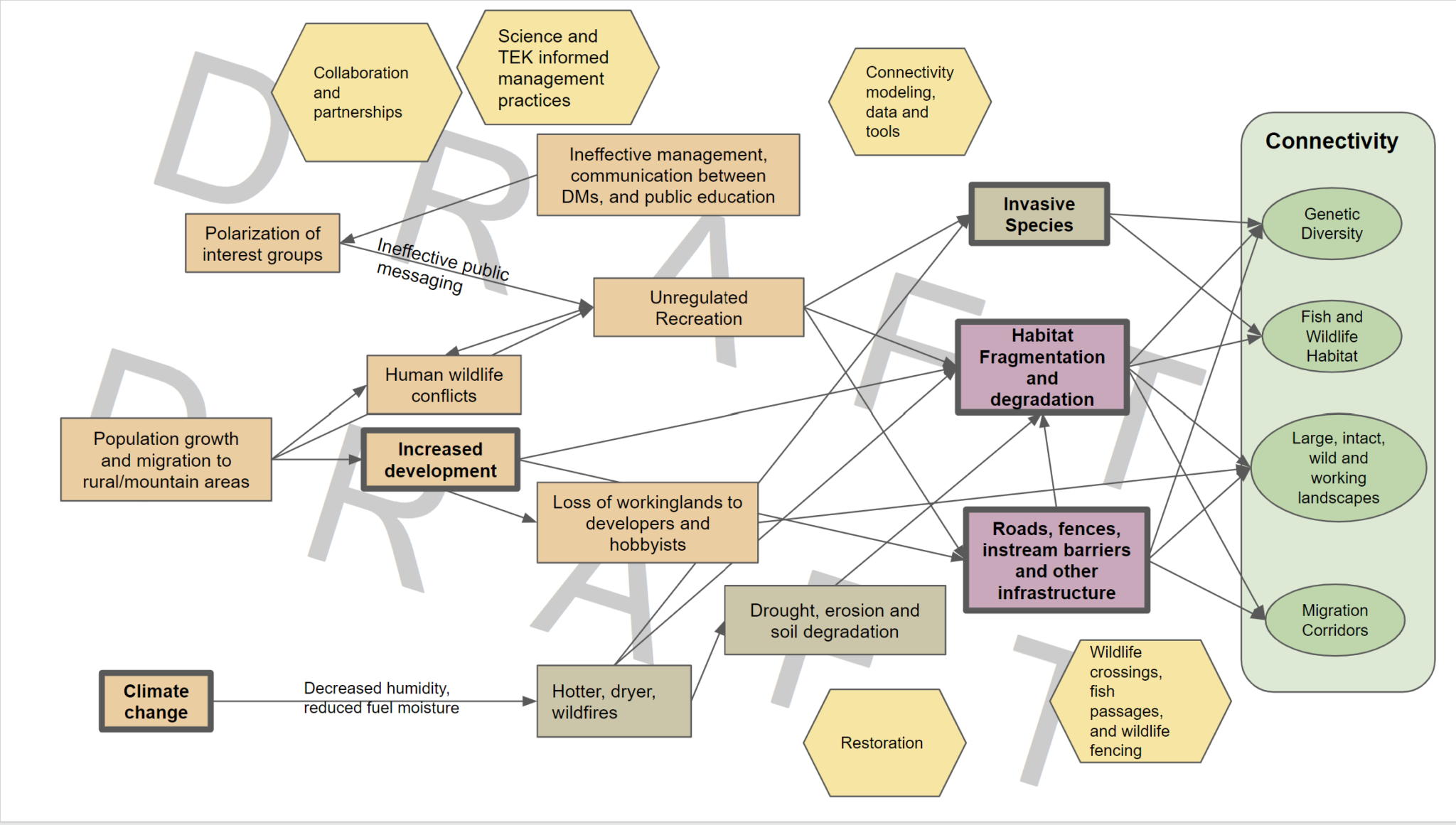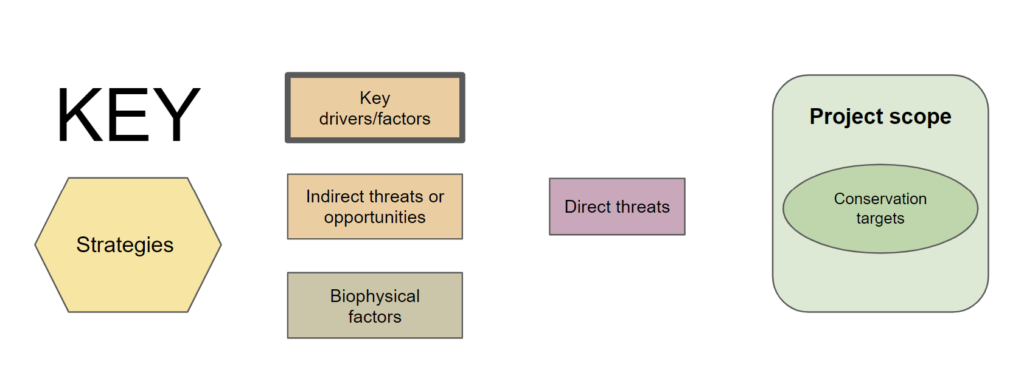Connectivity

The High Divide region is vital for wildlife movement and migration. Healthy rivers and streams, sagebrush steppe, intact working ranchlands, and forestlands provide essential habitat to a diversity of wildlife, plant, and fish species. Together, they connect the Crown of the Continent and Greater Yellowstone ecosystems and facilitate animal and plant movement between them. Collaborative efforts amongst local stakeholders, governments, and organizations are improving wildlife passage infrastructure and implementing science and traditional ecological knowledge (TEK) in decision making; however, climate change and increasing development are impeding successful migration throughout the region.
As more people move west, housing demands are increasing: developers are buying up workinglands to subdivide and building more and more roads across previously intact habitat. Simultaneously, both motorized and non-motorized recreation across many of these landscapes has also increased; together, these advances have resulted in significant human-wildlife conflict across the High Divide. Ineffective communication and polarization of interests between agencies, local communities, and other decision-makers, along with a lack of public education around these issues, are further perpetuating the threats of habitat fragmentation and human-wildlife conflicts. Drought and an increase in large wildfires also threaten connected landscapes, as streams and rivers experience lower and lower seasonal flows.
To address the host of issues facing connectivity, interest groups can rely on data and connectivity modeling and TEK to make decisions that benefit all who value connectivity in the landscape. Collaboration can also help secure funds for wildlife fencing, restoration, fish passage, and wildlife crossing projects, thus ensuring a better future for connectivity in the High Divide.
Photo: Hari Nandakumar | Unsplash
New Connectivity Tool Release!


Draft Conceptual Model

